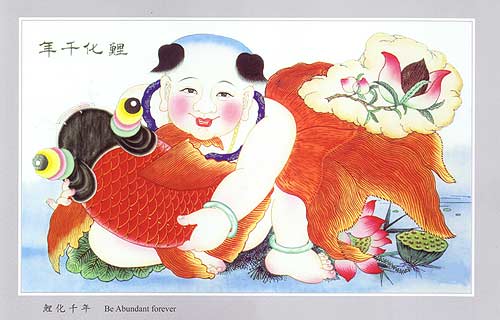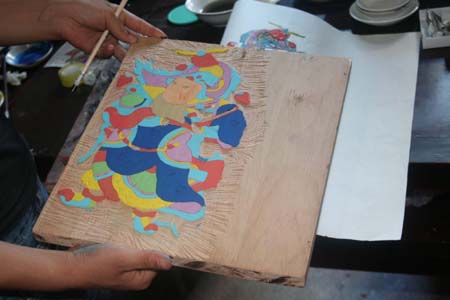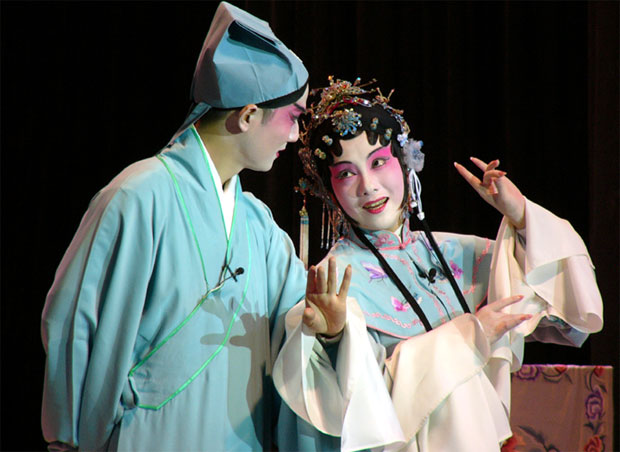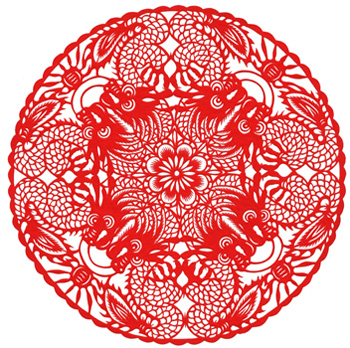New Year Paintings
New Year Painting is a unique art form in Chinese folk culture, which is used to decorate doors, walls and windows on the Chinese New Year to invite heavenly blessings and ward off disasters and evil spirits.
The history of New Year paintings can date from Tang Dynasty (AD618-907) and this folk art reached its zenith of sophistication in the Qing Dynasty(AD1644-1912).
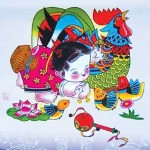 As decorative paintings for the New Year, the paintings mostly feature auspicious and joyous subjects. Simple lines, bright colors and happy atmosphere are combined to define New Year paintings, which capture all festive customs and life details, stories from traditional opera novels and folktales etc. The creation of New Year paintings are closely linked with people’s daily life and have strong local features.
As decorative paintings for the New Year, the paintings mostly feature auspicious and joyous subjects. Simple lines, bright colors and happy atmosphere are combined to define New Year paintings, which capture all festive customs and life details, stories from traditional opera novels and folktales etc. The creation of New Year paintings are closely linked with people’s daily life and have strong local features.
Some specific objects on paintings have some specific symbolized meanings. A bat (蝠), for instance, would represent fortune (福) for they share the same pronunciation in Chinese; by the same token, a fan (扇) indicates kindness (善), a rooster (鸡) is a symbol for luck (吉) and a fish(鱼) stands for surplus (余).
How to create New Year Painting?
Technically, New Year Paintings are wood block printings. The production of a New Year Painting includes five main steps: drawing (勾), carving (刻), printing (印), painting (画) and mounting (裱). Traditionally, all these steps are handcrafted in the family painting business studio.
Types of New Year Paintings
There are four distinguished New Year Paintings in China. The four outstanding have their own distinctive features and are named after their production places: Taohuawu (桃花坞) , Yangliuqing(杨柳青), Yangjiabu(杨家埠)and Mianzhu(绵竹).
1.Taohuawu New Year paintings
Taohuawu is a place in the north of Suzhou, Jiangsu province. Taohuawu New Year paintings originated from the brilliant wood engraving craft during Song Dynasty (about 900 years ago) and reached inspiration from embroidered image.
Each one colour is printed by each corresponding wood block, so procedures are complicated but the final paintings are delicate. Pink, bright red , blue , purple , green , light ink and lemon yellow are very usually used in the paintings.
2. Yangliuqing New Year paintings
Yangliuqing New Year paintings originated in Yangliuqing Town, in the western suburbs of Tianjin City about 600 years ago, in the early 17th century and flourished in the Qing Dynasty. Adopting the method of integrating block printing and hand-colored decoration, it is coloured after the image appears on the link lines. Traditional opera, beauty and chubby child are usually depicted in Yangliuqing New Year paintings.
3. Yangjiabu New Year paintings
Yangjiabu is a small village of Weifang, Shandong province. Yangjiabu New Year paintings’ history can date back to Ming Dynasty(AD1368-1644). At first influenced by Yangliuqing New Year paintings, Yangjiabu New Year paintings reached its peak in the Qing Dynasty.
4. Mianzhu New Year paintings
It is a type of folk woodblock picture in the southeast of China and produced in Mianzhu County, Sichuan province. Mianzhu New Year paintings began in the eleventh century and flourished at the end of the Ming Dynasty and the beginning of the Qing Dynasty. Composition of a Mianzhu New Year painting makes a point of symmetry, distinction and lively colours.
Nowadays, new printing technologies are adopted to speed printing and increase the number of copies, but people buy New Year paintings’ enthusiasm unchanged. Traditional New Year paintings are persisted as a priceless art form and you can probably still notice these paintings on the front doors of every household.
Vocabulary:
nián huà
年 画 new year painting n.
shàng tiān bǎo yòu
上 天 保 佑 Heavenly blessing n.
mù bǎn huà
木 版 画 Wood block painting n.
cì xiù xiāo xiàng
刺 绣 肖 像 Embroiled image n.
pàng wá wá
胖 娃 娃 Chubby child n.
jiā tíng
家 庭 Household n.
yán sè xiān yàn
颜 色 鲜 艳 Lively colours n.

